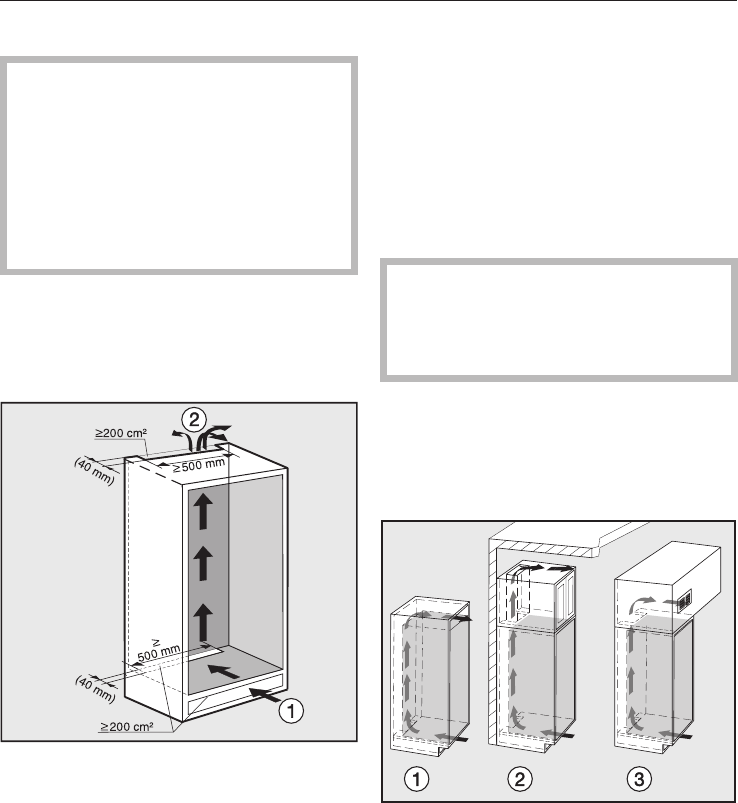
Ventilation
Specified ventilation gaps must be
maintained. Otherwise the
compressor will come on more
frequently and for longer, resulting in
an increase in electricity
consumption and also an increase in
the operating temperature of the
compressor, which can damage it.
Air at the back of the appliance gets
warm. The appliance housing unit must
be constructed to allow sufficient space
for ventilation.
–
Air is taken in through the plinth a
and exits upwards at the back of the
housing unit b.
–
A ventilation gap of at least 40 mm
depth must provided behind the
appliance for air to pass through.
–
The cross-sectional area for
ventilation in the plinth and the
housing unit and also beneath the
ceiling needs to be at least 200 cm
2
throughout to ensure that warm air
can be drawn through unhindered.
–
Important. The appliance uses less
energy the larger the ventilation
cross-section.
The ventilation gaps must not be
covered or blocked in any way.
They should be dusted on a regular
basis.
Top ventilation gap
The ventilation gap at the top of the
appliance can be constructed in
different ways:
a directly above the appliance with a
ventilation grille (free airflow of at
least 200 cm
2
)
b in between the housing unit and the
ceiling
c through a suspended ceiling
Installation
49


















